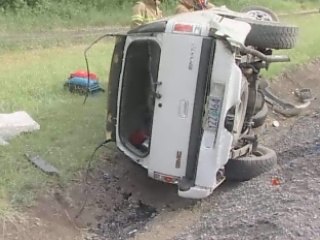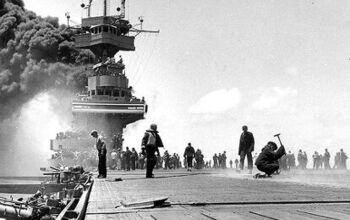Editorial: The Case Against GM
As part of its “reinvention,” GM wants to leave behind products liability claimants. “New GM” wants to jettison its legal responsibilities to “old” customers who were seriously injured by defective products—including customers who bought products from pre-bankruptcy General Motors who haven’t yet been injured. In this there is precedence. As I discussed here on my Bankruptcy Litigation Blog, Chrysler stiffed products liability claimants when they restructured post C-11. Is this going to be a case of deja vu all over again? Not if I can help it.
I’ve decided to step into the fray by filing this Objection to the GM Sale and this Memorandum in Support. On the brief with me is Public Citizen’s Adina Rosenbaum and Allison Zieve, counsel for the Center for Auto Safety, Consumer Action, Consumers for Auto Reliability and Safety, National Association of Consumer Advocates, and Public Citizen. I thank the Coleman Law Firm’s own Bob Coleman for his generosity in dedicating the firm’s resources to this important pro bono effort.
TTAC will be following my progress. Meanwhile, here’s a sample of my clients’ stories, taken from the filed objection. The only thing my clients did wrong: buy a GM car. For this act of brand loyalty, they have paid dearly. “New GM” should not be allowed to walk away from their “old” responsibilities.
[Keep in mind, this is NOT a debate over the underlying merits of how much GM is liable for, if anything, in any particular case. Rather it’s a debate over what a bankruptcy court is empowered to do by statute (the scope of section 363), by Congress (the scope a bankruptcy court’s jurisdiction), and by the Constitution (due process).]
- On August 17, 2004—a week before she was to start college—18 year old Callan Campbell was a front-seat passenger in a 1996 GMC Jimmy when the driver of the vehicle lost control while attempting to make a left turn. The vehicle entered a driver-side leading roll and rolled 1.5 times before ending on its roof. The roof collapsed over Callan’s seat, partially paralyzing her. The strength-to-weight ratio of the GMC Jimmy roof is about 1.9, which is among the lowest of all GM vehicles. GM’s own tests revealed that roof strengths in rollovers should be 3W to 4W. Callan’s paralysis could have been avoided at a mere fifty dollar cost to GM. Callan’s medical bills total $200,000 for the life-saving treatment she received immediately after the crash. Additionally, Callan’s parents have spent $160,000 renovating their home to accommodate Callan’s physical and medical needs as a C6 incomplete quadriplegic. A life care planner has estimated Callan’s current and future needs for extra doctor visits, medicine, durable equipment and home modifications at $4,518,831.00. An economist has predicted her work loss based on total disability at $4,120,538. Callan is also entitled to significant compensation for pain and suffering including loss of life’s pleasures, loss of dignity and independence, loss of the use of her limbs, and disfigurement.
- Kevin and Nikki Junso are the parents of Tyler, Matt, and Cole Junso. On April 25, 2006, Tyler and Cole Junso were involved a single car rollover accident while driving a 2003 GMC Envoy. During the rollover, the windshield and side windows were knocked out, reducing the strength of the roof structure. The Envoy sustained catastrophic damage to the roof structure, which buckled violently inwardly toward Tyler and Cole. Despite being belted, both occupants were partially ejected from the vehicle during the roll over. Seventeen year old Tyler, the driver, sustained massive skull and neck injuries and died at the scene of the accident. The evidence showed that Tyler’s head was partially outside the vehicle during the roll over sequence, due to the broken window and lateral displacement of the roof structure, and made contact with both the ground and the roof during the accident. The paramedics found Kevin, the passenger, with his left leg out the windshield and his right leg out the passenger side window. Kevin sustained serious injuries to his arms and legs, which eventually led to the amputation of his right leg below the knee.GM has been aware of the significant risks of “occupant excursion” if the safety mechanisms in its vehicles fail. Despite this knowledge, GM failed to introduce cost effective safety measures into its designs, which could have included side window plastics or laminates or seat belts resistant to excessive spool out. Not only has the Junso family lost a son as a result of GM’s failure to correct the strength instabilities in its SUVs, but Kevin has also lost his right leg. To date, Kevin has incurred medical bills totaling $555,204.19, and his future medical expenses are predicted to exceed $800,000.
- Edwin Agosto was driving his 2000 Chevrolet Blazer on September 22, 2008, when he lost control of his vehicle causing him to cross the center line and strike a tree. After striking the tree, the car once again crossed the center line and collided with a guardrail where it finally came to rest. Edwin’s airbags failed to deploy throughout the course of the entire accident. Because of that failure, Edwin suffered injuries including multiple spinous process fractures, a heavily comminuted fracture of the left scapula extending into his scapular spine and glenoid, multiple rib fractures, a humerus fracture, a subclavian vein injury, and a post traumatic subdural hygroma upon striking his head on the windshield. Due to these injuries, Edwin spent the next two and a half months of his life in a coma.
- Joseph Berlingieri was parked in a driveway on September 21, 2006 when the driver side impact airbag in his 1998 Cadillac DeVille malfunctioned and deployed. The air bag struck Joseph in his left ear, arm, and shoulder causing trauma injuries including hearing loss, tinnitus, and other serious injuries. The vehicle had previously been recalled for faulty side airbags, and after its repair was warranted to Joseph as being free from defect and suitable for purchase. However, the vehicle was not suitable for use, and was sold to Joseph despite the defective airbag mechanism.
[ click here for more inside info at bankruptcylitigationblog.com]
More by Steve Jakubowski
Latest Car Reviews
Read moreLatest Product Reviews
Read moreRecent Comments
- Jeff Self driving cars are not ready for prime time.
- Lichtronamo Watch as the non-us based automakers shift more production to Mexico in the future.
- 28-Cars-Later " Electrek recently dug around in Tesla’s online parts catalog and found that the windshield costs a whopping $1,900 to replace.To be fair, that’s around what a Mercedes S-Class or Rivian windshield costs, but the Tesla’s glass is unique because of its shape. It’s also worth noting that most insurance plans have glass replacement options that can make the repair a low- or zero-cost issue. "Now I understand why my insurance is so high despite no claims for years and about 7,500 annual miles between three cars.
- AMcA My theory is that that when the Big 3 gave away the store to the UAW in the last contract, there was a side deal in which the UAW promised to go after the non-organized transplant plants. Even the UAW understands that if the wage differential gets too high it's gonna kill the golden goose.
- MKizzy Why else does range matter? Because in the EV advocate's dream scenario of a post-ICE future, the average multi-car household will find itself with more EVs in their garages and driveways than places to plug them in or the capacity to charge then all at once without significant electrical upgrades. Unless each vehicle has enough range to allow for multiple days without plugging in, fighting over charging access in multi-EV households will be right up there with finances for causes of domestic strife.


































Comments
Join the conversation
I agree that the stories went on way too long, and sorry about that. That's one disadvantage of a cut and paste function. Still, I do think the personal side of this issue is important. Discovery production from GM and Treasury starts in earnest tomorrow, then into the hearing on Tuesday, so thanks for your well wishes... We need it! I may think we should win, but I'd say our odds are pretty low.